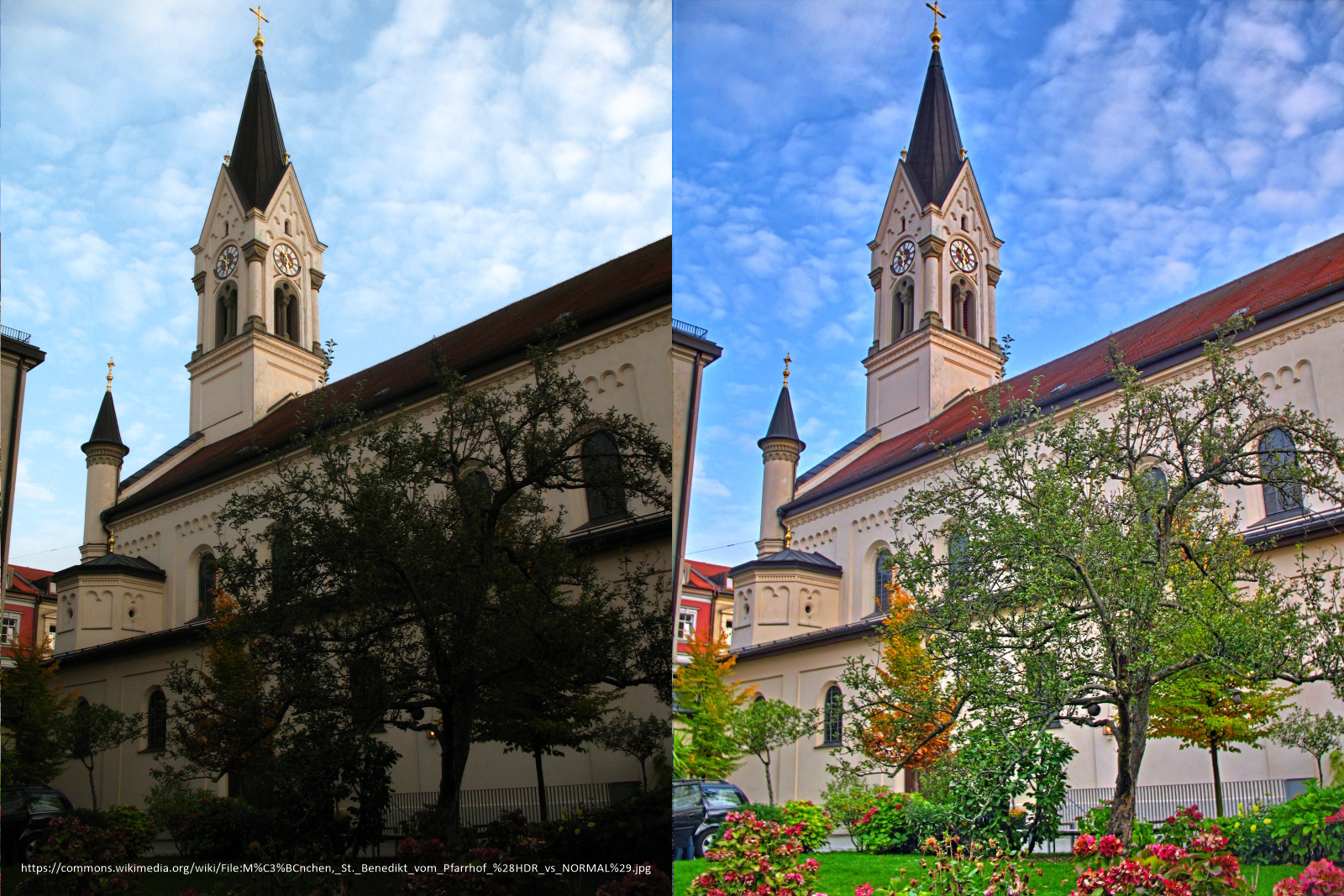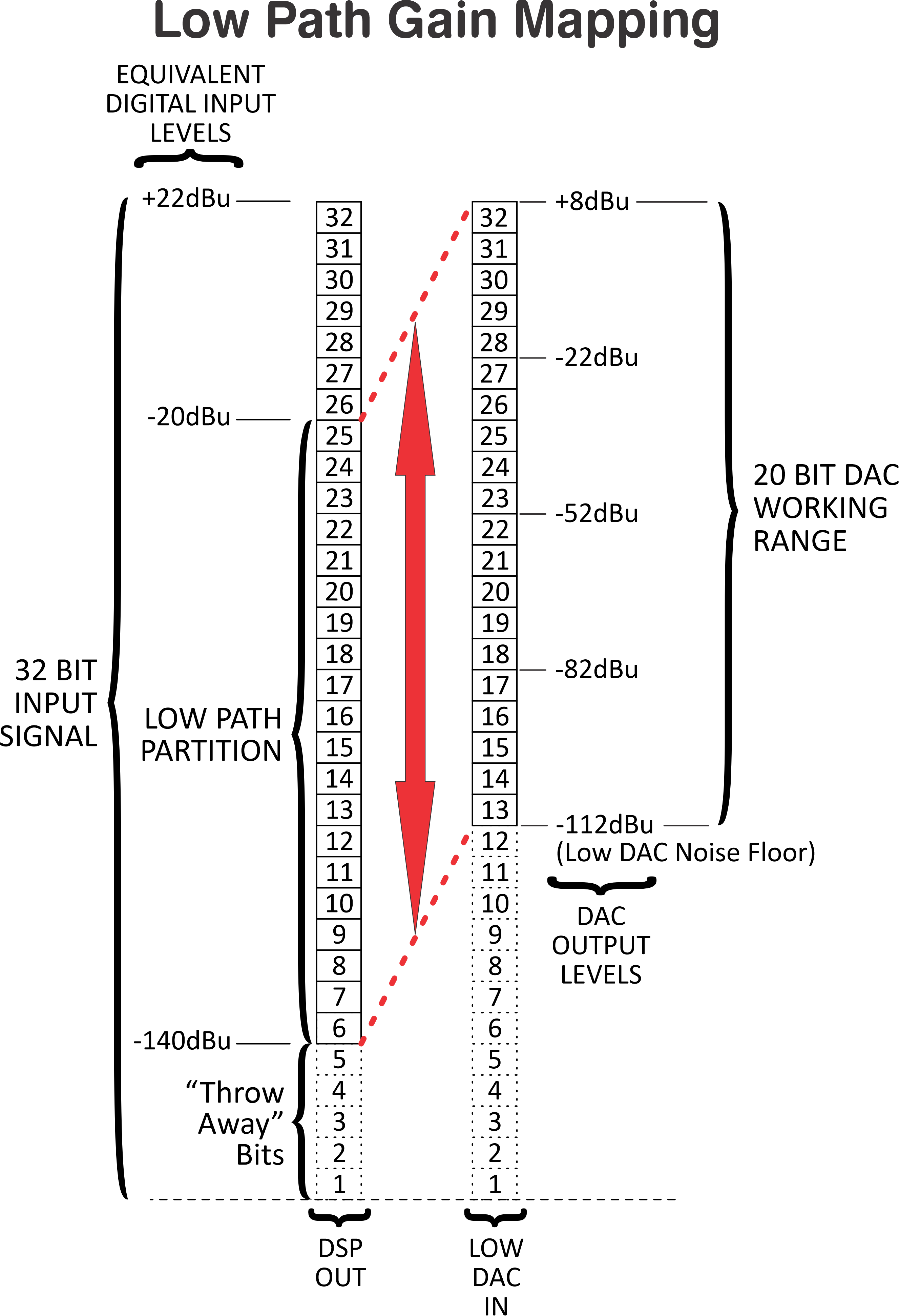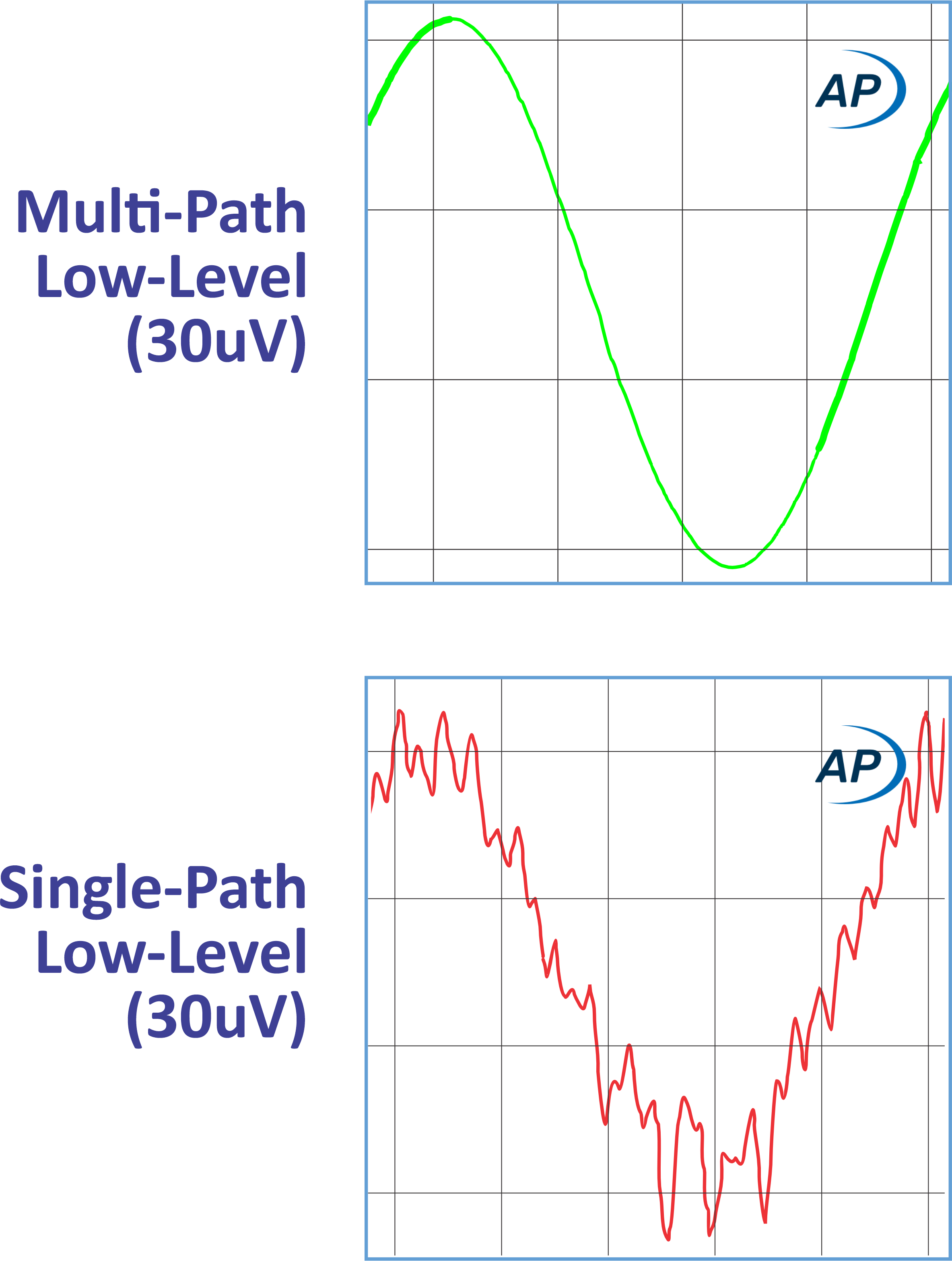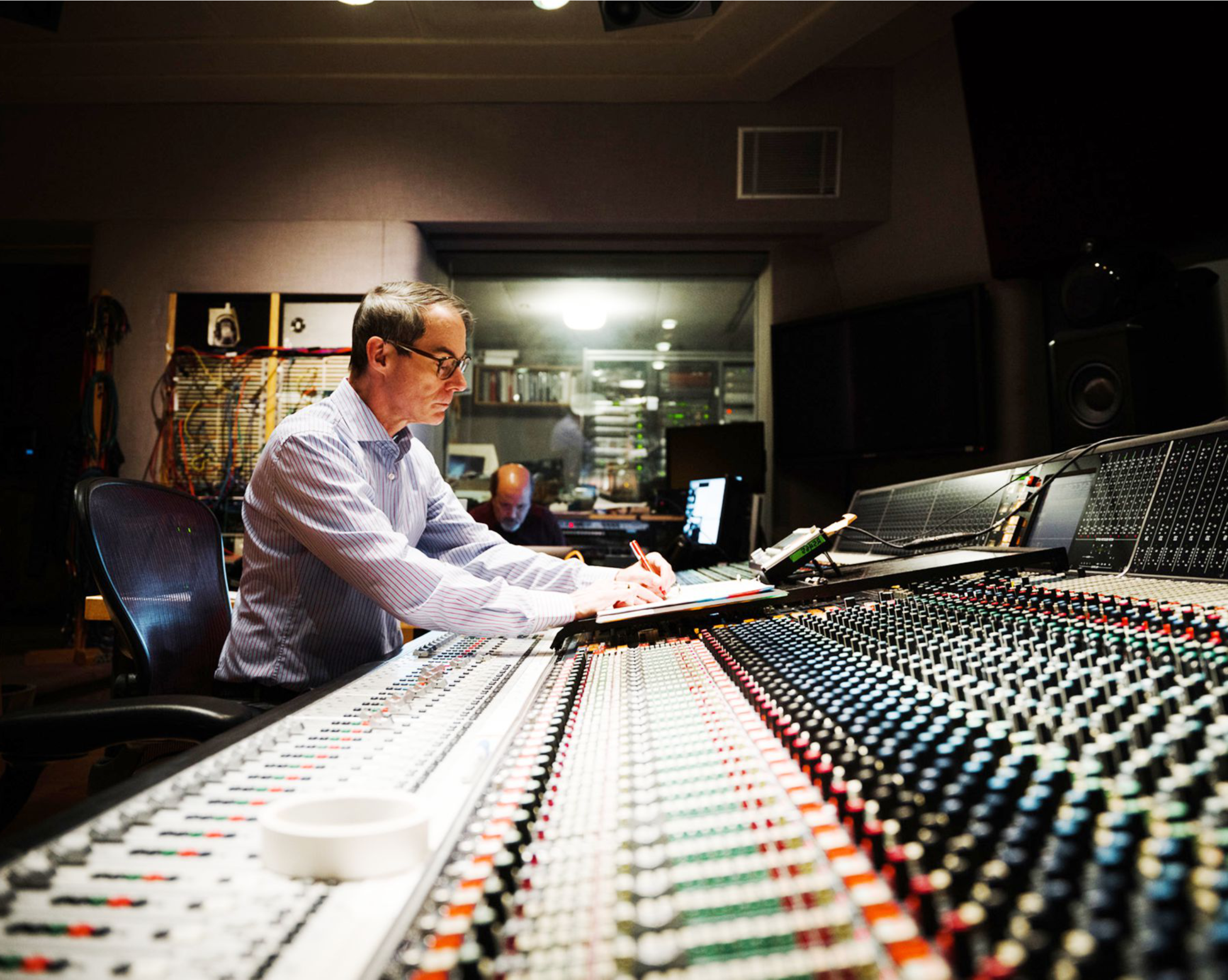Millenia imersiv D-1 DAC – HDR-A (High Dynamic Range Audio) 2-Channel Rackmount Digital-to-Analog Converter
$18,500.00 – $22,810.00Price range: $18,500.00 through $22,810.00
Experience the future of audio with the Millenia imersiv D-1 HDR-A DAC – a device that redefines the boundaries of digital-to-analog conversion.
The imersiv D-1 HDR-A Digital-to-Analog Converter represents a monumental leap in audio fidelity – a new paradigm of audio architecture, improving performance by a factor of 100X (40 dB) over today’s finest audio products. Engineered by John La Grou, founder of Millennia Media, this triple-patented, stereo multi-path DAC achieves an unprecedented High Dynamic Range exceeding 170 dB (168 dB of linearity), delivering output noise (broadband self-noise) as low as 40 nV (-146 dBu), and 28-bits of dynamic resolution. Its innovative architecture – splitting the signal into high and low-level paths – ensures ultra-linear performance, revealing sonic details previously unattainable. Housed in a compact half-rack, 2U chassis, the D-1 offers a user-friendly interface, optional expansions like Dante inputs, and stands as a testament to cutting-edge audio engineering.
*Optional accessories and add-ons available from the dropdown menu below – select your preferred option/s before you proceed to the checkout.
Millenia imersiv D-1 DAC – HDR-A (High Dynamic Range Audio) 2-Channel Rackmount Digital-to-Analog Converter
OVERVIEW
They said it couldn’t be done… 35 years of pro-audio excellence, and it all comes down to this.

Introducing the Millenia imersiv D-1 HDR-A Digital-to-Analog Converter, a groundbreaking innovation in audio technology. Developed over a decade by John La Grou, this triple-patented DAC employs a multi-path architecture, utilizing separate high and low-level signal paths to achieve a High Dynamic Range surpassing 170 dB and an output noise floor as low as 40 nV. This design ensures that even the most subtle nuances in audio are captured with unparalleled clarity and precision.
“Fundamentally changes professional audio.” – Ryan Robinson
“This DAC is astonishing. The difference is truly amazing. Like switching to IMAX.” – Paul Blakemore
“This converter is like no other I have heard.” – Jack Joseph Puig
“It’s amazing how the D-1 pulls the listener deeper into the music. This will be the industry standard.” – Dan Shea
Delivering noise, linearity, and dynamic range performance so advanced that modern test equipment cannot measure it. The imersiv HDR-A is an entirely new audio architecture, poised to re-imagine the way we capture and deliver sound, from microphone to power amplifier, and everything in-between.
“It really is an insanely rare time that a piece of gear changes the landscape.” – Larry Crane, Tape Op Magazine
“A client was over for a listening session, and thought he was hearing a 3D mix.” – David Bowles
“You have done something extraordinary.” – Neal Merrick Blackwood
“The level of detail is astonishing. The image is deep, very deep.” – Jonathan Wyner
Welcome to your future. The imersiv D-1 multi-path DAC delivers 28-bits of ISO-free dynamic range and linearity. Today’s legacy single-path DACs rarely claim anything over 21-bits. But that’s misleading. Single-path DACs have dreadful waveform distortion at low perceptual signal levels, hence deliver far less than 21-bits of measurably clean information.
“The clarity and total absence of coloration is stunning. The D1 is on an entirely other level.” – David Glasser
“Wow! What a difference in dimension and resolution. Really incredible.” – Dennis Sands
“Its ability to provide depth and separation is breathtakingly 3D.” – John Cuniberti
“Like hearing my music library for the first time. It’s beyond astonishing.” – Simon Franglen
The D-1’s architecture allows for real-time monitoring of its analog output, feeding back into the digital signal path to maintain extreme linearity. Housed in a sleek half-rack, 2U chassis, it features a display, intuitive controls, and a headphone output. Optional expansions include a balanced headphone amplifier, subwoofer breakout box, Dante inputs, and a 19″ rack mount kit, making it versatile for various professional applications. Praised by industry experts, the D-1 sets a new standard in digital-to-analog conversion, offering an audio experience that is both profoundly detailed and remarkably natural.
Paradigm Shift
Welcome to the most significant audio breakthrough since digital conversion. Delivering noise, linearity, and dynamic range performance so advanced that modern test equipment cannot measure it. The imersiv HDR-A is a revolutionary new multiple-path audio architecture, poised to fully re-imagine the way we capture and deliver sound, from microphone to power amplifier, and everything in-between.
HDR-A®
You may be familiar with HDR or High Dynamic Range photography. This is an image process that dramatically increases the dynamic range of photographic light. See the comparison showing a traditional photograph versus an HDR photograph. The improvement in HDR low-level detail is stunning.
Multi-path music processing is to audio what HDR is to photography. The analogy is so perfect that we’re calling it HDR-A or High Dynamic Range Audio.
In HDR photography, multiple stacked exposures are intelligently summed into a single photo, resulting in dramatically improved dynamic range. In imersiv HDR-A audio, multiple stacked sound levels are intelligently summed into a single audio file, resulting in dramatically improved dynamic range.
The image comparison is directly analogous to the improvement in low-level audio clarity and atmospheric depth experienced with imersiv HDR-A multi-path processing.
Single-Path Photography vs Multi-Path (HDR) Photography



Realization
Perfecting HDR-A took over 10 years of continuous research and development. The graph shows how it works.
Path 1 is an audio signal with 90dB of dynamic range, from 0dB to 90dB. Path 2 is an audio signal with 100dB of dynamic range, from 80dB to 180dB. When paths 1 & 2 are combined, the resulting dynamic range is 180dB, from 0dB to 180dB. That’s multi-path high dynamic range audio.
Multi-path HDR-A offers two major advantages over traditional single-path methods. First, it significantly reduces noise and distortion (THD). The imersiv D-1 achieves a remarkable 40 nanovolts of broadband noise, which is around 40 dB lower — 100 times quieter — than today’s best DAC designs. In fact, the D-1’s self-noise is 25dB below the measurement capability of today’s leading test equipment, such as the APx555B (see FAQ).
The second advantage is untethered headroom. HDR-A technology allows us to boost high-path headroom to any level without affecting our quiescent self-noise. The D-1 provides +22dBu (10 volts) of ISO-free headroom while maintaining its profoundly low 40nV self-noise floor. This results in a true broadband, unweighted linearity and dynamic range of 28 bits (168dB).
Multi-path is the next standard of audio architecture, from microphone to power amp, and everything in between.
Purity
Acoustic recording engineers — whether in film scoring, classical music, jazz, or other genres — understand that spatial information is conveyed in the quiet moments: in the space between notes; in the subtle decay of a piano chord just before it fades from perception; and in the brief instant a note is first struck, before it reaches its peak. Quoting one of today’s top recording engineers, “On the music side, everything in the quiet neighborhood is where we get ‘the life’ and spatial cues in a recording. Distortion of lower-level partials is the very first casualty of any acoustic recording.”
Extraordinarily pure low-level audio is a key reason why HDR-A topology delivers far greater spatial and timbral reality than legacy single-path audio. When audio levels drop below a certain threshold, HDR-A begins processing in a new DAC core with dramatically lower distortion and noise performance.
See diagram. Compare a low-level, perceptible sine wave on the D-1 multi-path DAC versus a high quality single-path DAC. Single-path waveforms are jaggy and noisy. We hear this as poor image definition, atmospheric collapse, and a blurring of complex timbres — while HDR-A “new core” signals remain pure and natural, even far below the limits of human hearing.

David Bowles, Skywalker Ranch

Pro Proven
Over forty Grammy-winning recording engineers and film composers evaluated the imersiv D-1 DAC for one year. The results were unambiguous:
“A revelation…”
“I went into shock…”
“The clarity is incredible…”
“This DAC is astonishing…”
“Unbelievably pure and clear…”
“This will be the industry standard…”
“Like switching from 35mm to IMAX…”
“The client thought he was hearing a 3D mix…”
“Works magic with metal and dense material…”
“I can hear the space between the instruments…”
“Like hearing my music library for the first time…”
Pedigree
Built upon 35 years of innovation in pro-audio design and U.S.-based manufacturing, the imersiv D-1 embodies a heritage of excellence that has shaped the sound of our era’s most celebrated recordings. Millennia’s 2019 induction into the NAMM Technology Hall of Fame acknowledges their lasting influence and commitment to redefining professional audio. They adhere to aerospace-grade design, build, and QA standards, required by their esteemed clients – ranging from classical music recording engineers, broadcast engineers for major events like the Grammys and Oscars, and film scoring stages from Hollywood to Mumbai. It’s no surprise that pre-owned Millennia products consistently achieve top resale value within their professional categories. Learn more about their story here.

Deeper Dive
Join imersiv designer John La Grou for a short video tutorial (below). You will discover the inner workings of HDR-A D-to-A conversion and how it achieves 28-bits of dynamic range and linearity. You’ll also learn how multi-path architecture can be applied to every link in the audio signal chain, from microphones to power amplifiers, and everything in between.
KEY HIGHLIGHTS
Revolutionary Multi-Path Architecture:
The D-1’s design splits the audio signal into separate high and low-level paths, each optimized for different signal strengths. This approach minimizes noise and distortion, achieving a dynamic range that exceeds 170 dB, a feat unmatched by traditional DACs.
Ultra-Low Noise Floor:
With an output noise level as low as 40 nV, the D-1 ensures that even the faintest audio details are preserved. This ultra-low noise floor contributes to a listening experience that is both immersive and true to the original recording.
Compact and Expandable Design:
The D-1’s half-rack, 2U chassis is designed for flexibility and ease of integration into various studio setups. Optional expansions, such as Dante inputs and a balanced headphone amplifier, allow users to tailor the DAC to their specific needs.
Endorsed by Industry Professionals:
Renowned audio engineers, producers, and industry leaders alike have lauded the D-1 for its exceptional performance. Bob Katz, among others, noted its ability to reveal previously unheard details.
“The D1 has exceeded the performance of all other DACs by orders of magnitude.” – Bob Katz
FEATURES
- Triple-patented multi-path architecture for unparalleled dynamic range.
- High Dynamic Range exceeding 170 dB, capturing the full spectrum of audio detail.
- Output noise as low as 40 nV, ensuring ultra-quiet operation.
- Real-time analog output monitoring for extreme linearity.
- Half-rack, 2U chassis with display, controls, and headphone output.
- Optional Expansions:
- Balanced Headphone Amplifier
- Subwoofer Breakout Box
- Dante Inputs
- 19″ Rack Mount Kit
- Endorsed by industry experts for its groundbreaking performance.
TECHNICAL SPECS
Supported Input Format: 32kHz to 384kHz up to 32-bits
- 1 x DSD
- 2 x DSD
- 4 x DSD
- Dante
Digital Inputs:
- 1 x USB (B) 32-bit
- 1 x AES XLR
- 3 x SPDIF BNC
- 1 x Toslink
- 1 x Dante (option)
XLR Analog Outputs: +22dBu diff-bal (9.75Vrms) max @ 1.8 ohms quiescent source impedance
Level Control:
- 0.1dB or 1.0dB per step
- Selectable
- 154dB range (-130 to +24dB)
Manual Alignment: To 0.01dB left + right matching
Display: Monochrome OLED 256 x 64
Front Panel Switches:
- Input
- Setup
- Select
- Filter
- Mute
Remote Control:
- IR
- 27 functions
- 4 reserved
- 2 AA batteries required
Powering: 90-240V 50-60Hz
Power Use: 15 Watts nominal.
Dimensions (W x H x D): 8.6” (218 mm) x 16.3” (414 mm) x 3.2” (81 mm)
Weight: 7 pounds 7 oz (3.4kg)
Shipping Dimensions (W x H x D): 21” (53 cm) x 8” (20 cm) x 21” (53 cm)
Shipping Weight: 12 lbs. (5.5kg)
Included Accessories:
- Power Adapter
- IEC Power Cable
- Remote Control
- 2 AA Batteries
- Quick Start Guide
- BNC to RCA
- Adapters (3)
Temperature Range: 32°F to 104°F (0°C to 40°C)
Humidity Range:
- 35% to 85% RH
- Non-condensing
Frequency Response: 20Hz – 20kHz +/-0.1dB
THD+N at 1kHz (22kHz BW): 0.0002% at +22dBu
THD+N at 20kHz (80kHz BW): 0.0005% at +22dBu
Self-Noise 20Hz-22kHz bandwidth: -146dBu unweighted (calculated)
Dynamic Range: 168dB (28-bits)
Signal-to-Noise Ratio: 168dB (28-bits)
Linearity: 168dB (28-bits)
Crosstalk: Better than -120dB at 1kHz
Headphone Output: 32ohm to 600ohm 2.8W max
DC Offset: 20uV max quiescent
Digital Filter: 6 selectable variations, see user guide
Polarity Flip: 180 degrees
Mute: Output Relay
Resampling: 192kHz
Calibration: See user guide
NOTES:
- Performance specifications are broadband & unweighted.
- Specifications subject to change without notice.
OPTIONAL ACCESSORIES & ADD-ONS
- BHA (Balanced Headphone Amplifier):
- Replaces the stock unbalanced headphone amplifier.
- Uses a 4.4mm Sony Pentaconn connector.
- Includes a 4.4mm (plug) to 1/4″ (jack) external adaptor for use with conventional headphones.
- Factory upgrade, only.
- SBB (Subwoofer Breakout Box)
- Use with the D-1 DAC to buffer the XLR analog output between shared balanced (XLR) and unbalanced (RCA) destinations, such as a subwoofer.
- Maintains -146 dBu noise performance.
- 19″ Rack Panels:
- Mounts one (2ch) or two (4ch) D-1 box into a 19″ rack panel (1.5U).
- Available in silver or black.
- Can be installed by a competent technician (request instruction sheet), but prefer factory installation.
- Specify colour and 2ch or 4ch when ordering.
- Dante Input Option:
- Dante Network digital input card.
- Can be installed by a competent technician (request instruction sheet).
RESOURCES
| Dimensions | 2348 × 1127 × 920 cm |
|---|---|
| BHA (Balanced Headphone Amplifier) | No, Yes (+$910) |
| SBB (Subwoofer Breakout Box) | No, Yes (+$1,525) |
| 19" Rack Panels | No, Yes (+$325) |
| Dante Input Option | No, Yes (+$1,550) |
Related products
OUTBOARD
Converters
COMPUTER MUSIC
Burl Audio BDA12 – 12-Channel DAC plus Stereo ORCA Control Room Monitor for B16 Mothership
OUTBOARD
Audio / MIDI Interfaces
Burl Audio BDA12 – 12-Channel DAC plus Stereo ORCA Control Room Monitor for B80 Mothership






















